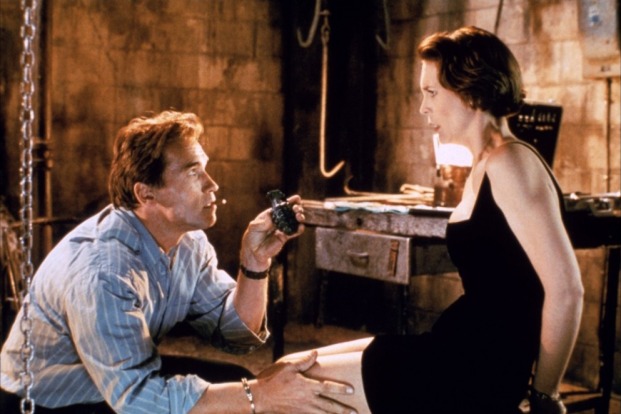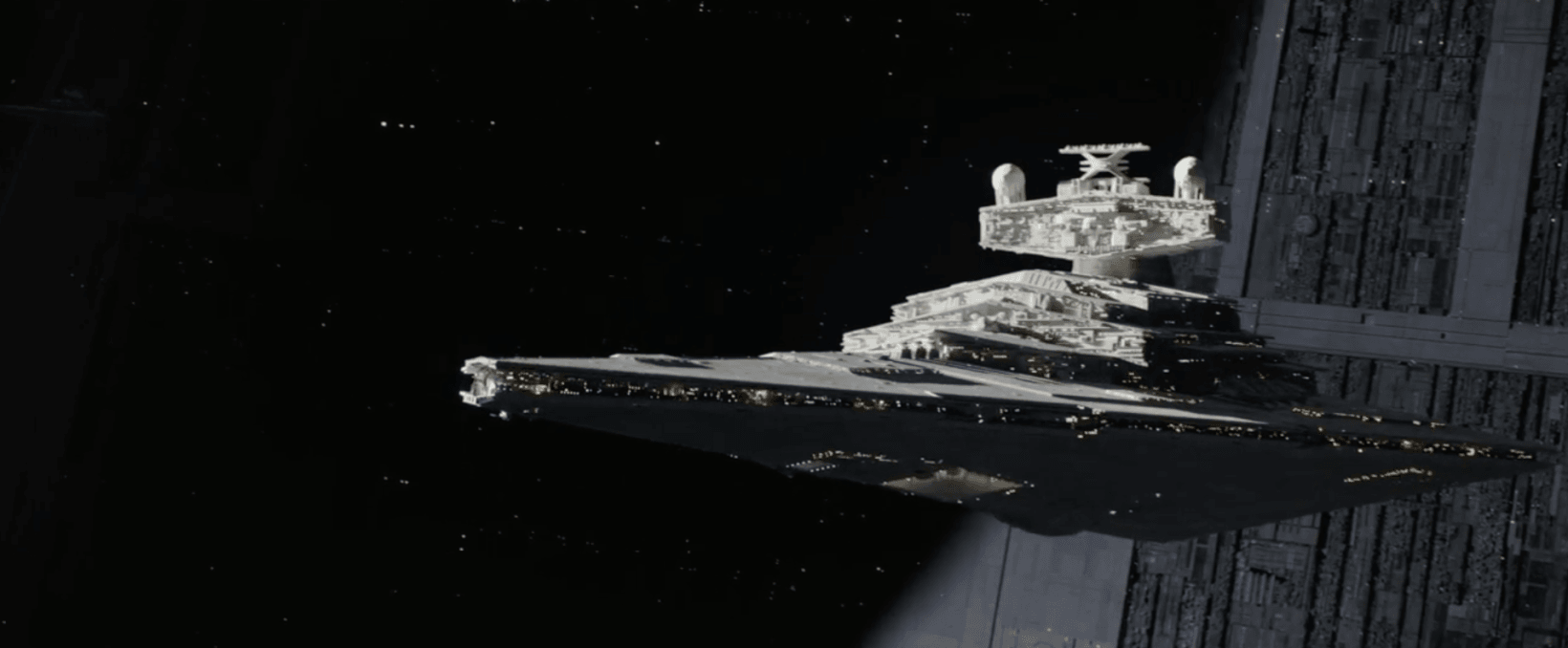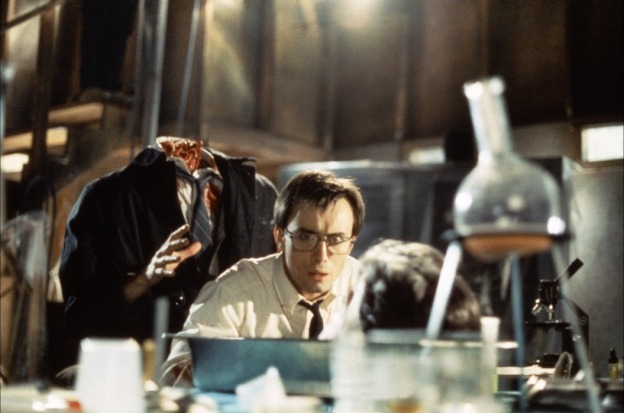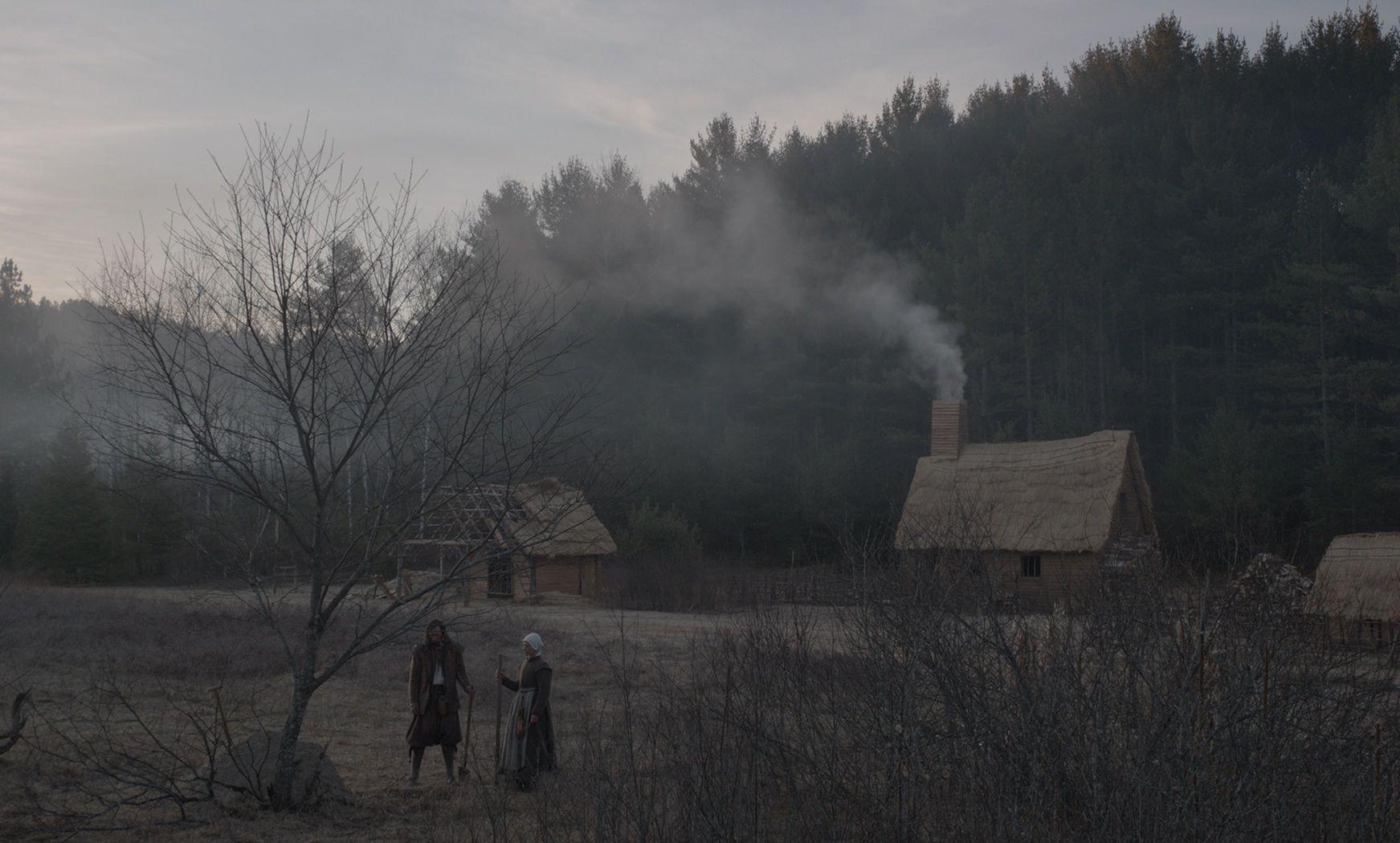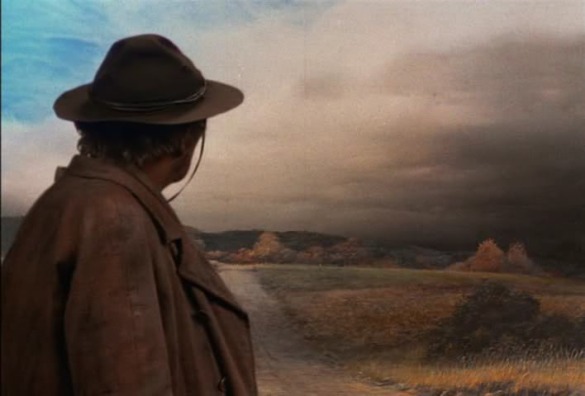Forget which movies were the best, which sidekicks were the best?
This list is limited to Disney cel-animated films from 1937 to 2009. I have not seen all of Home On the Range, A Goofy Movie, or Treasure Planet. Sorry. I’m also skipping shorter and more fractured/anthology films like Saludos Amigos, Fantasia, and The Adventures of Ichabod and Mr. Toad. Sorry again.
Also…spoilers.

37. Gurgi from The Black Cauldron (1985). Gurgi is the Jar Jar Binks of Disney sidekicks. I was actually happy when he died at the end…but then he comes back to life so scratch that. There are other forgettable sidekicks: a clairvoyant pig, Hen Wen; an old bard, Fflewddur Fflam; some bosom-y witches; a goblin bad guy sidekick (evil Gurgi, I call him): and a grouchy fairy named Doli. . Doli is the most interesting character, but his negativity is almost too much for this already depressing adventure and he literally just disappears after awhile.

36. Genie from Duckt Tales: The Movie – Treasure of the Lost Lamp (1990). Russ Taylor’s is the most obnoxious voice ever to come out of a magic lamp. The only reason it’s not worse than Gurgi is because I kind of like Merlock’s sidekick, Dijon (voiced by Richard Libertini).

35. Terk and Tantor from Tarzan (1999). They all but completely ruin what could have been an actually very good adapation of the Burroughs novel. Rosie O’Donnell’s abrasive Brooklyn brogue does not belong to a gorilla in the African jungle and Wayne Knight’s nervous elephant hypochondriac is an odd character choice. The film is actually smart and mature and humorous enough on its own. They’re not worse than Gurgi (who only added to an already disappointing film) because they have one song that is pretty good.

34. Jaq and Gusgus from Cinderella (1950). These guys and all the mice are pretty annoying and make Cinderella look more like a paranoid schizophrenic. Why are the mice in this universe the only animals that wear clothes? I do like the King and the Duke a lot though—their scenes are priceless.

33. Dinky and Boomer from The Fox and the Hound (1981). Perhaps one of the more forgettable entries, this tale of unnatuaral friendships features a shabby comic relief duo: a high strung sparrow and a dopey woodpecker. Again, the owl (Big Mama) wasn’t bad.

32. Ignacio Alonzo Julio Federico de Tito (and company) from Oliver & Company (1988). Billy Joel songs aside, there’s not much point or reason to watch this pet version of “Oliver Twist.” Tito (voiced by Cheech Marin) is the most memorable in the long list of doggy sidekicks, but they’re all too broad and largely forgettable.

31. Little John and Hiss in Robin Hood (1973). Recycled Jungle Book animation aside, the villain is too stupid to be menacing and the heroes aren’t particularly engaging. Little John (Phil Harris) is sort of a boring counterpart to Robin Hood. Hiss (Terry-Thomas) is an occasionally interesting sycophant to the wicked Prince John—largely because he’s smarter than the Prince. The rooster narrator, for me, is the best character.

30. Thumper from Bambi (1942). He’s not cute. He’s nauseating. He’s got one or two cute lines, I’ll give him that. And after puberty he’s kinda creepy and even less appealing. Flower, the gender confused skunk, is even worse. “Twitterpainted” is code for forest orgy. The owl wasn’t bad.

29. Phil from Hercules (1997). The movie is a pop-culture onslaught set against a classic Greek myth backdrop so maybe I shouldn’t be mad that Danny DeVito is the Yoda-like satyr that trains Hercules. The problem is his voice is too recognizable and he’s even drawn to resemble Danny. It becomes more than a little distracting. Sorry, Danny, I love ya, but James Woods as Hades is the star of this flick. And Pegasus is a superior sidekick. Yeah, and Pain and Panic are kind of obnoxious too.

28. Major Dr. David Q. Dawson from The Great Mouse Detective (1986). I don’t dislike this movie or the characters. In fact, there’s a lot of really cool things in it, but it suffers from the old Sherlock Holmes adaptation quirk of making Watson into a clumsy simpleton. Dawson’s not bad, just nothing special. Fidget, the crippled bat henchman of Ratigan is annoying, but interesting in his own little way.

27. Mr. Pleakly from Lilo & Stitch (2002). It’s weird. Almost all the characters are really interesting but Mr. Pleakly might be the weakest. Not that he’s a bad character. He’s a functional plot device: keep Russian-sounding evil scientist alien from causing a ruckus while apprehending 626. He’s got some funny business, but not the most memorable character in the bunch sadly. 
26. Victor, Hugo, and Laverne from The Hunchback of Notre Dame (1996). Like Terk and Tantor for Tarzan, the wise-cracking gargoyles almost ruin this movie. Hunchback is intelligent, complex, dramatic and also humorous by itself. The addition of Quasimodo’s ambiguous hallucinations is unnecessary (and Jason Alexander’s voice is, again, a tad distracting). They do have some good lines and one decent song. Not terrible, but they greatly diminish the power of this very well done Disney-fied adaptation of Victor Hugo.

25. Georges Hautecourt and Uncle Waldo and Scat Cat from The AristoCats (1970). It’s not a great movie and there really are no consistent sidekicks, but there’s some fairly interesting side characters nevertheless. Georges (voiced by the ubiquitous Charles Lane) is a senile attorney, but he’s barely in the movie. Uncle Waldo is a drunk goose who just escaped a restaurant. He’s fun, but only gets one scene (and that’s really all he needs). Scat Cat (Scatman Crothers) is the only other sidekick worth mentioning (and there are others), largely because he leads the song “Everybody Wants to Be a Cat.” Sorry, Roquefort.

24. Meeko, Flit, and Percy from Pocahontis (1995). All silent, but all fun, funny, and engaging characters. A mischievous raccoon, a feisty hummingbird, and a prissy pug may not exactly fit into a true story about racism, genocide, and environmentalism, but I think they work because they don’t talk. If you already are past the rape of American history, some cute animals shouldn’t offend you.

23. Archimedes in The Sword in the Stone (1963). Junius Matthews voices the grouchy owl sidekick to the wizard, Merlin. Something about the combination of how cranky but powerless and easily manipulated he is I find endearing. He does appear to have a sturdy sense of ethics, despite being ornery much of the time, which makes him more lovable.

22. Rutt and Tuke from Brother Bear (2003). I don’t care about the movie, but c’mon! Rick Moranis and Dave Thomas doing their Bob & Doug McKenzie schtick again as cartoon Canadian moose decades after Strange Brew? That’s actually already funnier in concept than the actual Bob & Doug McKenzie.

21. Ray from The Princess and the Frog (2009). Yes, more than the jazzy alligator. He’s dumb, but optimistic and I am actually deeply sad when he gets killed (that never happens in Disney! They wouldn’t even kill Gurgi right!). He’s a firefly who’s in love with a star and he’s devoted to his friends. The song he sings is also pretty sweet. I think Disney was finally thanking Jim Cummings for voicing thousands of bit parts over the years.

20. The Dwarfs from Snow White and the Seven Dwarfs (1937). There are seven of them and somehow they are all uniquely defined (if not all totally memorable). Dopey is an animated Harpo Marx and everyone remembers Grumpy for his sour-puss attitude, but he does have a heart when it matters. Sleepy’s my favorite.

18. Vincenzo “Vinny” Santorini from Atlantis: The Lost Empire (2001). It’s a shame this movie wasn’t better. Cool steampunk gadgets and a multinational bunch of characters with big name voices and yet the only thing anyone remembers is Vinny. Don Novello puts his famous Father Guido Sarducci voice to good work as an Italian demolitions expert.

17. Wilbur from The Rescuers Down Under (1990). We love Bernard and Bianca, but their mode of transportation is just as memorable. John Candy voices the painfully American albatross who finds himself in his own plot amidst the main action—trying to escape an army of adorable nurse mice and their menagerie of surgical torture devices.

16. Tinkerbell from Peter Pan (1953). Another silent sidekick, but Tinkerbell is different in that she doesn’t know her role in the story being told. She is feisty, jealous, petulant, and not afraid to negotiate with Captain Hook to get rid of Wendy. She makes mistakes but she tries to make them right. 
15. Timothy Q. Mouse from Dumbo (1941). I like Dumbo a lot. Timothy is a good example of how a good sidekick can help the main character—in this case, help the audience too, because the main character is mute. He’s imperfect himself, though he might never admit it, and applies his own confidence into helping his elephant friend.

14. Evinrude from The Rescuers (1977). While this is kind of a weak movie—from the annoying girl to the revoltingly unappealing villains—it does have one or two decent things going for it. Evinrude is the oft-overlooked, longsuffering dragonfly who tries to help Bernard and Bianca (as long as he can survive being chased by killer bats or drinking the hillbilly moonshine). He’s silent, endearing and he knows his duty.

13. Tigger from The Many Adventures of Winnie the Pooh (1977). Paul Winchell voices Tigger: the bouncy, trouncy, infantile, hyperactive tiger of the Hundred Acre Wood. He’s fun and memorable and has a great introduction…which leads into one of the best songs (“Heffalumps and Woozles”).

12. Cheshire Cat from Alice in Wonderland (1951). He’s not exactly a sidekick and he’s not exactly consistently helpful. He’s more like a stoner buddy; laid back, happy, moving in almost slow-motion, in his own world, and willing to instigate disaster just to see what happens (with little regard for the consequences that might befall Alice). He’s the closest thing to a boon and a comfort anyone can find in this cock-eyed acid trip. He’s voiced by Sterling Holloway.

11. Mushu and Cri-kee from Mulan (1998). Mulan has several sidekicks, but the most memorable were Eddie Murphy as the incompetent dragon guardian, Mushu, desperate to find glory for himself, but ends up really trying to help Mulan, and Cri-kee, the little lucky bug who comes along for the ride. The two complement each other well and add some profoundly western sensibilities to this Chinese epic.

10. Kronk Pepikrankenitz from The Emperor’s New Groove (2000). So technically the bad guy’s sidekick, the hapless lug, Kronk (voiced by Patrick Warburton), is just too good not mention. He speaks squirrel, his shoulder angels and demons are as dumb as he is, and he is a navigational genius. He’s genuinely a nice guy, he just maybe got mixed up with the wrong people.

9. Sargeant Tibs and The Colonel from 101 Dalmations (1961). I like sidekicks that are useful and get involved in the action. Sgt. Tibs is a very minor sidekick in a film crammed with well over 100 characters. He’s a dedicated British soldier cat and does his job with seriousness, despite the blustering of his less competant superior, an old English sheepdog named the Colonel. These guys are just doing their job…for England and dogdom. The Captain (the horse) is also pretty good. They function like a well oiled machine, each knowing their roles and rank.

8. Timon, Pumbaa, and the Hyenas from The Lion King (1994). Timon (Nathan Lane) and Pumbaa (Ernie Sabella) are a carefree gay couple who, unable to have children, decide to adopt Simba the lion. Right? The meerkat and warthog duo are nicely drawn and very funny as a team and get to kick some butt too. The hyena trio (Whoopi Goldberg, Cheech Marin, and Jim Cummings) are just as good, if not better, as Scar’s henchman. Without Ed, however, they are nothing.

7. Sebastian from The Little Mermaid (1989). Flounder is boring and annoying. Sorry. Scuttle (Buddy Hackett) is annoying, but it’s on purpose and funny and he redeems himself at the end. Sebastian (Samuel E. Wright) is a good, level-headed crab who has to help Ariel fall in love with Eric, keep Scuttle and the others under control, be loyal to the King, and try to stay alive on land without losing his mind.

6. Lumiere and Cogsworth from Beauty and the Beast (1991). These guys (voiced by Jerry Orbach and David Ogden Stiers) are trying to make the Beast and the castle more appealing to Belle so she can fall in love, lift the curse, and they can all be human again. Although they are part of a bigger narrative, and contribute to it greatly, it is their own little relationship that is more interesting. These two royal servants (?) have been together for a long time and, even as household appliances, still can’t always get along. Their friendship is real and fun and it’s enjoyable to see its ups and downs.

5. Genie from Aladdin (1992). So yeah, there’s a mess of sidekicks in this one too. Abu is cute and fun, Iago is funny and abrasive, Raja is boring as sin, and carpet is tacit, loyal, and awesome, but Robin Williams as the Genie kind of steals the show. Genie shows up late into the film but his manic energy soon takes control (in a good way). This movie sort of started the craze of wild pop culture references running anachronicistically amok in children’s entertainment. He’s bound by certain genie rules, but he still would like to make friends with whoever he meets. It’s pretty much what Robin Williams would have been like if he were magic.

4. Jiminy Cricket from Pinocchio (1940). He may seem stale and boring after some of the more contemporary entries, but he is sort of the archetype for all Disney sidekicks. Jiminy Cricket (Edward Cliff) is Pinocchio’s conscience…who keeps getting ignored. But like all good consciences, he never truly goes away and will follow Pinocchio anywhere. He’s loyal and dedicated even when it doesn’t serve his own best interests.

3. Baloo and Bagheera from The Jungle Book (1967). Like Lumiere and Cogsworth, they work because they are at odds with one another. Baloo (Phil Harris) is almost the main character, but I still qualify him as Mowgli’s sidekick. He and Bagheera (Sebastian Cabot) make for another special family unit team in the spirit of Timon and Pumbaa…but with more marked distinctions between them. This version of The Jungle Book is really about different parenting styles, and every animal in the jungle has a different idea about what’s best for the man-cub, but it’s mostly the pragmatic panther arguing with the insouciant bear. Mowgli needed Baloo for adventure and personal growth, but Bagheera knows what the boy needs to survive and succeed in life. It has to be Baloo who risks it all to fight the tiger at the end because he has to face the music that he was reckless with Mowgli. That they can disagree so much, find the resolutions they do, and be best of friends by the end—because they really did want the same things all along—is a testament to their enduring roles as great sidekicks.

2. Flora, Fauna, and Merryweather from Sleeping Beauty (1959). Voiced by Verna Felton, Barbara Jo Allen, and Barbara Luddy, these three good fairies are the bedrock of this movie. Princess Aurora is sort of simple, Prince Philip is slightly more interesting, but who is there really to root for against the wicked Maleficent? Three plump, bickering, middle-aged fairyfolk who give up their magic powers for 16 years to protect Aurora, that’s who. They each have strongly defined personalities, have funny and relatable dynamics between each other, and can kick butt when they need to…before quietly fading into the background to let the young lovers take the spotlight. Some say Prince Philip was the only Disney prince who ever did anything, but he wouldn’t have gotten anywhere without the fairies’ help. Merryweather is still one of my favorite characters.

1. Jock and Trusty from Lady and the Tramp (1955). I feel like these guys get forgotten. A senile bloodhound who has lost his smell and repeats himself (Trusty, voiced by Bill Baucom) and an aging, overly cautious and possessive Scottish terrier (Jock, voiced by Bill Thompson) might be an unlikely spot for number one, but hear me out. They’re old, conservative, and rusty at their old tricks, but they love their neighbor, Lady, and when they at last realize they’ve misjudged the reckless Tramp they spring into action. When the Tramp is taken by the pound (undoubtedly to be euthanized), Trusty insists they stop have to stop the wagon. Both our heroes are separated and down for the count, it’s up to the bit players to fix everything—even at the cost of their own safety. Through mud and rain, Trusty battles to remember his long lost sense of smell. When Jock finally tries to discourage Trusty and says “We both know you’ve lost your sense of smell,” there’s a look they exchange that speaks years of subtext. When the courageous but feeble old dogs finally do stop the wagon and save the Tramp, and we see the toll their selflessness has taken on them, it is incredibly moving. These characters, despite having very little screen time, are just very well realized and compelling in their simplicity and have deeply satisfying character arcs.
Disagree? Come at me, bro.
disney.wikia.com
Originally published for The Alternative Chronicle on October 17th, 2013.





